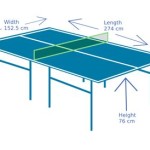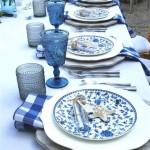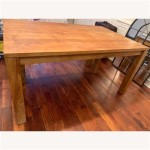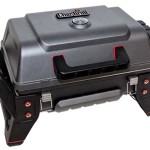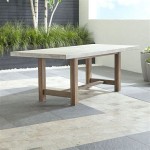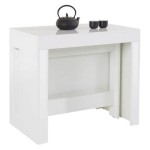What is the Standard Size of a Regulation Pool Table?
Pool, a game of skill and precision, often enjoyed in both casual and competitive settings, relies heavily on the consistent dimensions of its playing surface. The regulation pool table, designed to provide a fair and standardized environment for gameplay, adheres to specific size requirements. Understanding these standards is crucial for anyone involved in the sport, whether they are players, venue owners, or manufacturers. This article delves into the standard sizes of regulation pool tables, exploring the critical measurements and the rationale behind them.
The term “regulation pool table” typically refers to tables used in official tournaments and sanctioned leagues. These tables must meet specific criteria set forth by governing bodies like the World Pool-Billiard Association (WPA) and various national and regional organizations. While specific regulations may vary slightly, the overall dimensions and features remain consistent to ensure uniformity and fairness across different competitions.
The Importance of Standardized Dimensions
Standardized dimensions are paramount in maintaining the integrity of pool as a competitive sport. If pool tables varied significantly in size, the game would become less about skill and more about adapting to the unique characteristics of each table. Consistency in size allows players to develop strategies and techniques that can be applied across different venues and competitions. Furthermore, it provides a level playing field, ensuring that all participants compete under the same conditions.
The standardized dimensions also influence the equipment used in the game. Pool cues, balls, and other accessories are designed with the regulation table size in mind. For example, the length and weight of a pool cue are optimized for the distances covered on a standard table. The size and weight of pool balls are also carefully calibrated to ensure consistent roll and rebound on the playing surface. Any deviation from the standard table size could compromise the performance of this equipment and affect the overall gameplay experience.
Moreover, standardization simplifies the manufacturing and maintenance of pool tables. Manufacturers can streamline their production processes by adhering to a set of established dimensions. This leads to cost savings and ensures that replacement parts and accessories are readily available. Maintenance is also made easier, as technicians are familiar with the standard dimensions and can quickly identify and address any issues that may arise.
Regulation Pool Table Sizes: 9-Foot and 8-Foot
The two most common regulation pool table sizes are 9-foot and 8-foot tables. These dimensions refer to the overall length of the playing surface, which is measured from the inside edge of the cushion on one end to the inside edge of the cushion on the opposite end. The width of the playing surface is typically half of the length, resulting in a 2:1 aspect ratio.
A 9-foot pool table, often referred to as a tournament-size table, has a playing surface that measures 50 inches wide by 100 inches long. This is the preferred size for professional tournaments and high-level competitive play. The larger playing surface provides more space for strategic maneuvering and allows for more challenging shots. It also requires a higher level of skill and precision, making it the ideal choice for experienced players.
An 8-foot pool table, sometimes called an "oversized" or "professional bar" table, has a playing surface that measures 44 inches wide by 88 inches long. This size is commonly found in bars, clubs, and homes. While slightly smaller than a 9-foot table, an 8-foot table still provides ample space for enjoyable gameplay. It is a popular choice for both casual and intermediate players, offering a balance between challenge and accessibility.
It is important to note that these dimensions are the standard sizes for regulation pool tables. There are also smaller tables available, such as 7-foot tables, which are often used in homes or recreational settings where space is limited. However, these smaller tables are not considered regulation size and are not typically used in official competitions.
When selecting a pool table, it is crucial to consider the available space in the room where it will be placed. A good rule of thumb is to allow at least 5 feet of clearance around the table on all sides. This will provide ample room for players to move around and take shots without obstruction. If space is limited, an 8-foot table may be a more practical choice than a 9-foot table.
Other Important Dimensions and Features
In addition to the overall size of the playing surface, there are other important dimensions and features that contribute to the regulation standards of a pool table. These include the height of the table, the size and shape of the pockets, and the type of cloth used to cover the playing surface.
The height of a regulation pool table is typically between 29.25 inches and 31 inches, measured from the floor to the top of the cushions. This height is designed to provide a comfortable playing position for most adults. However, some manufacturers offer adjustable-height tables that can be customized to suit individual preferences.
The pockets of a regulation pool table must also meet specific size and shape requirements. The corner pockets are typically narrower than the side pockets, and all pockets must have rounded edges to prevent balls from bouncing out. The exact dimensions of the pockets can vary slightly depending on the specific regulations in place, but they are typically designed to be challenging enough to require skill and precision while still allowing for reasonable pocket shots.
The cloth used to cover the playing surface is another critical factor in determining the quality and playability of a pool table. Regulation pool tables typically use a high-quality wool or wool-nylon blend cloth that provides a smooth and consistent playing surface. The cloth must be tightly stretched and free of wrinkles or imperfections to ensure accurate ball roll and rebound. The color of the cloth is typically green, but other colors are also available.
The cushions, also known as rails, are the rubber bumpers that surround the playing surface. Regulation pool table cushions must be made of high-quality rubber that provides consistent rebound and responsiveness. The shape and profile of the cushions are also important, as they affect the angle at which balls rebound off the rails. The cushions must be securely attached to the table frame and free of any damage or wear that could affect their performance.
The slate bed of a pool table is the foundation of the playing surface. Regulation pool tables typically have a slate bed that is at least 1 inch thick and precision-leveled to ensure a perfectly flat playing surface. The slate must be free of any cracks or imperfections that could affect ball roll. The slate bed is typically supported by a sturdy wooden frame that provides stability and prevents warping or sagging.
The markings on a pool table, specifically the head string, foot string, and diamond markers, are also standardized in regulation tables. These markings serve as visual aids for players, helping them to aim shots and execute strategic maneuvers. The markings must be accurately placed and clearly visible to ensure fair and consistent gameplay.
In summary, the standard sizes of regulation pool tables, along with the precise specifications for height, pockets, cloth, cushions, and markings, all contribute to a standardized and equitable playing experience. These regulations are essential for maintaining the integrity of the sport and ensuring that players compete under the same conditions, regardless of location.

The Official Size Of A Pool Table Canadian Home Leisure

What Is The Standard Size Of A Pool Table Measurement Guide Room

Pool Table Room Size Guide Chart Birkbeck Billiards

Room Size Pooltables Com

Pool Table Room Size Calculator

How Tall Is A Standard Pool Table Height Guide

Room Size Specifications Olhausen Billiards

Pool Table Room Size Guide Chart Birkbeck Billiards

Correct Pool Table Dimensions To Leave Enough Room For Playing Billiard

Room Size Specifications Olhausen Billiards

